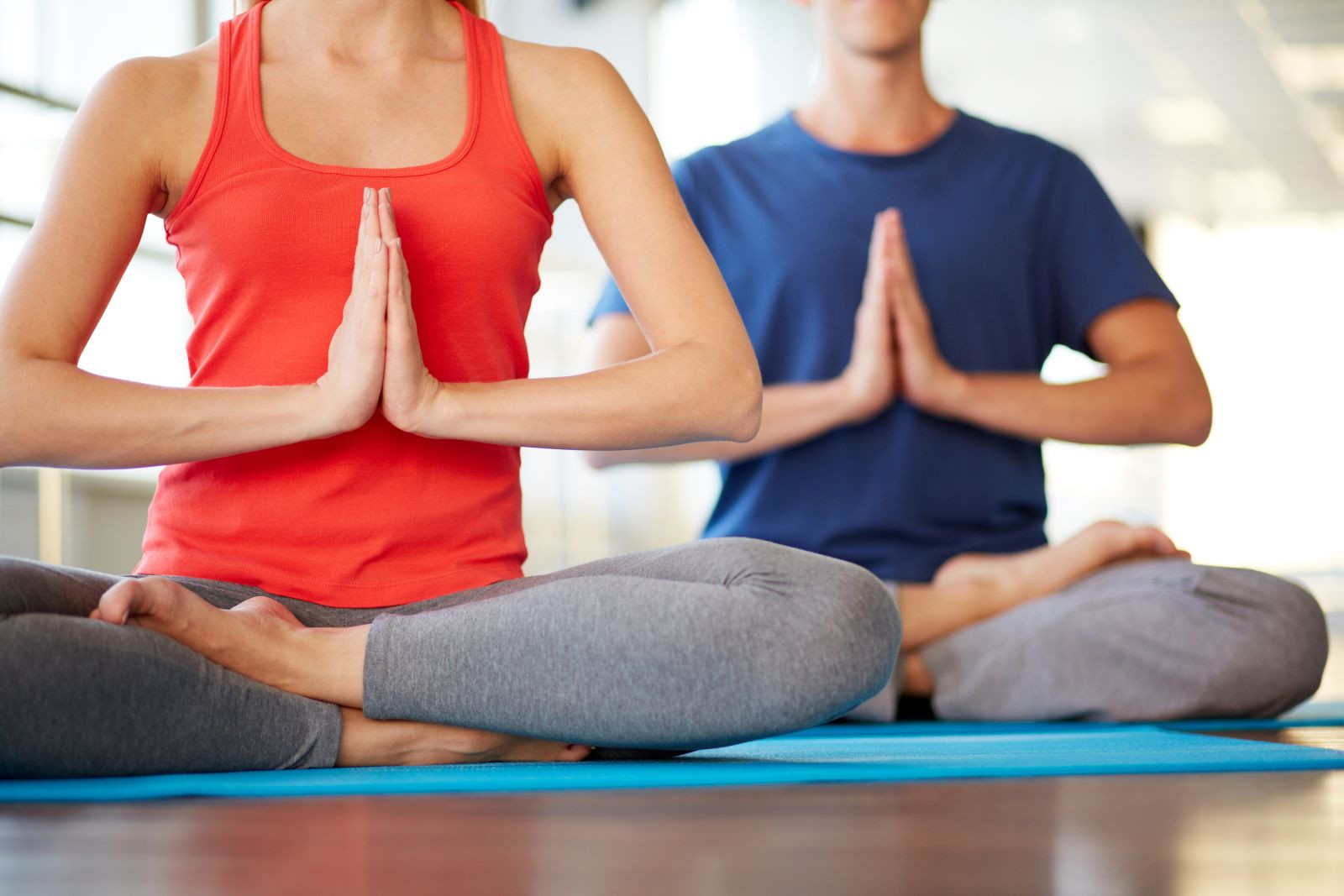Hey there, if you’ve ever felt like life’s throwing curveballs faster than you can dodge them, you’re not alone. A few years back, I was juggling a demanding job, family chaos, and that nagging sense of overwhelm that kept me up at night. That’s when a friend dragged me to my first yoga class—me, the guy who could barely touch his toes. Little did I know, pairing those poses with a bit of meditation would become my secret weapon for sanity. Yoga and meditation aren’t just trendy buzzwords; they’re ancient practices backed by modern science that can transform your physical and mental health. Yoga involves mindful movement, breath control, and poses to build strength and flexibility, while meditation focuses on quieting the mind through techniques like mindfulness or guided breathing. Together, they offer a holistic approach to wellness. In this article, we’ll dive into the top 10 health benefits, drawing from reliable sources and a touch of my own journey to show how these practices can make a real difference in your life.
Understanding Yoga and Meditation Basics
Yoga traces its roots to ancient India, blending physical postures (asanas), breathing exercises (pranayama), and ethical principles for overall harmony. Meditation, often incorporated into yoga sessions, is about cultivating awareness and presence, whether through focused breathing or visualization. For beginners wondering what yoga and meditation really entail, think of yoga as a gentle workout for body and mind, and meditation as a mental reset button—no fancy gear required, just consistency.
If you’re new to this, start simple. I began with 10 minutes a day, fumbling through poses on a borrowed mat, and it felt awkward at first—like trying to dance without rhythm. But over time, it clicked.
The Top 10 Health Benefits of Yoga and Meditation
These practices shine when combined, amplifying each other’s effects. From reducing cortisol levels to enhancing neuroplasticity, the science is compelling. Let’s break down the top 10, with real-world insights to keep it relatable.
1. Reduces Stress and Anxiety
One of the most immediate perks is how yoga and meditation dial down stress hormones like cortisol, leaving you calmer amid daily chaos. Studies show regular practice can lower anxiety symptoms by up to 30% in just weeks, as it activates the body’s relaxation response. I recall a particularly hectic week at work; a quick 15-minute meditation session helped me breathe through the panic instead of spiraling.
This duo works by shifting focus from worries to the present, making it easier to handle triggers. Plus, it’s free therapy—no couch required.
- Quick Tip: Try alternate nostril breathing from yoga to instantly ease tension.
- Science Backing: A meta-analysis of over 1,300 people confirmed meditation’s anxiety-busting power.
2. Improves Flexibility and Strength
Yoga’s poses stretch muscles and joints, boosting flexibility while building core strength without the grunt of weights. Meditation complements this by encouraging body awareness, helping you hold poses longer. After months of practice, I went from stiff mornings to effortlessly reaching for my coffee mug on a high shelf—small wins add up.
It’s not about contortionist feats; even gentle flows enhance range of motion and prevent injuries. Research from Johns Hopkins highlights how slow movements warm muscles and improve balance.
For beginners, poses like child’s pose or downward dog are gateways—no prior flexibility needed.
3. Enhances Mental Clarity and Focus
Ever zone out mid-conversation? Meditation trains your brain to stay present, lengthening attention spans and sharpening focus. Yoga adds mindful movement, reducing mental fog from multitasking. During my early days, I’d meditate before meetings, and suddenly ideas flowed without distraction—it’s like upgrading your brain’s operating system.
Science supports this: Just 13 minutes daily for eight weeks improved memory and accuracy in tasks. It’s especially helpful for students or professionals battling burnout.
Humor alert: If your mind wanders like mine did (to grocery lists during meditation), gently reel it back—that’s the practice.
4. Boosts Heart Health
Yoga lowers blood pressure and cholesterol by reducing inflammation and promoting better circulation, while meditation eases the fight-or-flight response. Combined, they cut cardiovascular risks significantly. I noticed my resting heart rate drop after consistent sessions, making hikes feel less like marathons.
A Harvard review found yoga helps with hypertension, potentially more than some meds for mild cases. It’s a low-impact way to fortify your ticker.
Incorporate heart-opening poses like cobra for added benefits.
5. Alleviates Chronic Pain
For back pain or arthritis sufferers, yoga’s gentle stretches relieve tension, and meditation reframes pain perception. The American College of Physicians endorses yoga as a first-line treatment for chronic low back pain. When an old injury flared up for me, daily cat-cow poses turned agony into manageable aches.
This isn’t a cure-all, but it empowers you to move without wincing. Evidence from 11 studies shows eased joint discomfort in arthritis patients.
Start slow to avoid strain—listen to your body.
6. Improves Sleep Quality
Struggling with insomnia? A bedtime yoga routine signals your body to wind down, while meditation quiets racing thoughts. Research indicates meditators fall asleep faster and stay asleep longer. I used to toss for hours; now, legs-up-the-wall pose lulls me into dreamland reliably.
Mayo Clinic notes meditation enhances sleep by lowering heart rate and fostering relaxation. It’s a natural alternative to pills.
Aim for 5-15 minutes before bed for noticeable zzz’s.
7. Supports Emotional Well-Being
These practices foster positivity by balancing mood-regulating brain chemicals. Meditation combats depression symptoms, and yoga’s endorphin release lifts spirits. During a tough breakup, my routine became an emotional anchor, helping me process feelings without drowning in them.
A review of 3,500 adults found mindfulness meditation improved self-image and outlook. It’s like therapy in motion.
Emotional appeal: Imagine greeting challenges with resilience instead of dread.
8. Increases Self-Awareness
Meditation peels back layers of autopilot thinking, revealing habits and triggers. Yoga heightens body-mind connection through poses. I discovered my stress-eating patterns during sessions, leading to healthier choices.
This awareness spills into relationships and decisions. Studies show it enhances compassion and reduces negative self-talk.
It’s empowering—suddenly, you’re the captain of your inner ship.
9. Strengthens the Immune System
By curbing stress, yoga and meditation bolster defenses against illness. Lower cortisol means less suppression of immune cells. I swear by it during flu season; fewer colds since starting.
Research links regular practice to reduced inflammation and better antibody response. A simple daily habit for robust health.
Pair with balanced eating for max effect.
10. Promotes Better Posture and Balance
Yoga corrects slouchy habits from desk life, strengthening core and spine. Meditation improves proprioception for steadiness. Tree pose saved me from embarrassing stumbles—now I stand taller, literally.
Johns Hopkins evidence shows it aids balance, reducing fall risks in older adults. Everyday grace, one pose at a time.
Yoga vs. Meditation: A Quick Comparison
Wondering how they stack up? Both reduce stress, but yoga adds physical toning while meditation dives deeper into mental quietude. Here’s a table for clarity:
| Aspect | Yoga Benefits | Meditation Benefits | Combined Power |
|---|---|---|---|
| Physical Health | Flexibility, strength, pain relief | Relaxation, better sleep | Holistic body-mind balance |
| Mental Health | Mood boost, focus | Anxiety control, self-awareness | Emotional resilience |
| Time Commitment | 20-60 minutes sessions | 5-20 minutes daily | Flexible integration |
| Beginner Ease | Requires space/mat | Anywhere, no props | Start with guided apps |
Pros of combining: Amplified results, like yoga’s movement prepping the mind for meditation. Cons: Time-intensive if overdone; start small to avoid burnout.
Pros and Cons of Starting Yoga and Meditation
Pros:
- Accessible for all ages and fitness levels
- Cost-effective (free online resources abound)
- Long-term gains in vitality and peace
- Builds community through classes
Cons:
- Initial discomfort or frustration for inflexible beginners
- Consistency required for benefits
- Not a substitute for medical care in serious conditions
Weigh these, and the pros usually win—trust me, the glow-up is worth it.
People Also Ask (PAA): Common Questions on Yoga and Meditation Benefits
Based on popular searches, here are real queries people have:
- What are the benefits of yoga for mental health? Yoga reduces anxiety and depression by releasing endorphins and promoting mindfulness, with studies showing mood improvements in as little as eight weeks. It’s a natural antidepressant.
- How does meditation help with stress relief? It activates the parasympathetic nervous system, lowering cortisol and heart rate for instant calm. Mayo Clinic recommends it for daily stress management.
- Can yoga and meditation aid weight loss? Indirectly yes—by curbing emotional eating and boosting metabolism through mindful movement. Pair with diet for best results.
- What’s the difference between yoga and meditation? Yoga is active with poses and breath; meditation is still, focusing inward. Many yoga classes include meditation.
- How often should beginners practice? Three to five times a week, 15-30 minutes, to build habits without overwhelm.
These cover common curiosities, helping you navigate your start.
Best Tools and Resources for Beginners
Where to get started? For informational intent, check free guides on Yoga Journal for pose breakdowns. Transactionally, apps like Headspace or Calm offer guided sessions—Headspace has a 10-day free trial for meditation basics.
Top beginner resources:
- Apps: Insight Timer (free meditations), DoYogaWithMe (yoga videos).
- Poses to Try: Mountain pose for posture, child’s pose for relaxation.
- Meditation Techniques: Start with breath awareness—inhale for four counts, exhale for four.
- Gear: A non-slip mat from Amazon basics; no need for pricey stuff.
For classes, search local studios or online via Glo. These tools make diving in easy and fun.
FAQ: Your Yoga and Meditation Questions Answered
- What is the best time to practice yoga and meditation? Mornings energize; evenings unwind. I prefer dawn sessions for a fresh start—experiment to find your rhythm.
- Can yoga help with anxiety disorders? Yes, gentle styles like Hatha reduce symptoms effectively, per clinical reviews. Consult a doctor for severe cases.
- How do I know if I’m doing meditation right? There’s no “wrong”—wandering minds are normal. Consistency matters more than perfection.
- Are there yoga styles for seniors? Absolutely; chair yoga adapts poses for mobility issues, improving balance safely.
- Does meditation require silence? Not always—guided audio works wonders for noisy environments.
In wrapping up, these top 10 benefits aren’t just claims; they’re pathways to a fuller life, backed by science and personal proof. Whether easing stress or building strength, yoga and meditation invite you to invest in yourself. Start small today—your future self will thank you. If you’re ready for more, explore a beginner class or app. Namaste.









Leave a Reply